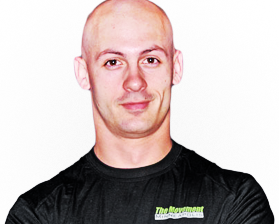
Everyone thinks they’re advanced.
Oh it’s not that egregious, like if you were to ask someone directly how they rate their skill at whatever they wouldn’t say “I’m somewhere between advanced and expert.”
Instead it’s exposed in subtle ways in the decisions they make. They don’t go to workshops or classes and they don’t hire coaches. They self-select into groups where their skill is at the topic of the curve, even if overall the group isn’t all that advanced. Or they add complexity to their approach when they should be simplifying by taking away. The list goes on.
You know who never outgrows the basics?
True experts.
The best.
You never, ever, ever outgrow the basics. Good fundamentals are the key to advanced progression in everything I’ve ever done.
Recently I wrote up this simple strength workout basically as an example for how to structure your strength training if you’re a beginner, and how to progress it over time. It’s part of this guide I put together with five essential life skills. I’d love for you to download it and check it out.
The program is so simple, and is really just the fundamentals you need for strength with nothing more. Just to test it out I started doing it after my powerlifting meet in May. And then I kept doing it. And kept doing it, and I’m still doing it.
Because I love it. It’s so simple, but so effective. It’s just the basics, but that’s all you need.
Anyway, I was walking home from the gym today after doing it and I thought, you know, most people overcomplicate their training way too much. You’d be amazed at what you can do just by focusing on the fundamentals. Even the complicated injury or movement problem you have that you think requires a complex solution probably isn’t as complex as you think and you might be surprised how quickly you can resolve it by focusing on a fundamental and just tweaking it a little with biofeedback.



